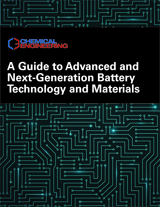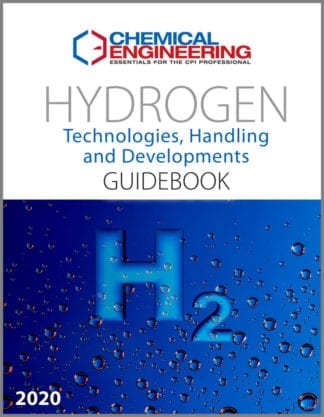Description
This Chemical Engineering guidebook contains tutorial-style engineering and “Facts at Your Fingertips” topics. The collection of practical, how-to articles provides engineering recommendations for minimizing fugitive emissions from valves, pumps, tanks and piping systems through proper equipment selection and use of appropriate seals and gaskets, as well as appropriate operations and maintenance strategies and monitoring techniques. Several articles focus on reducing the risk of potential dust explosions — a critical safety aspect for chemical process operations handling fine powders and other bulk solids. As a bonus, this guidebook also includes information that discuss best practices for managing and modernizing plant revamps and capital-intensive projects.
These articles were originally published between 2010 through 2019. It is the first of a 2 part series; Volume 2 — entitled “Managing Air Pollution — Volume 2: Eye on Combustion and High-Temperature Operations” — which is sold separately.
Delivered in a PDF, 220 pages.
Articles include:
Prevent Product Release with Pressure Protection Systems – 4
Closing off pressure upstream can minimize the need for pressure-relief systems to open, avoiding product waste and possible environmental damage
Key Considerations for the Use of Portable Gas Detectors- 8
Recent advances in gas-monitoring technologies can greatly increase worker connectivity and safety
Air-Pollution Control: Assessing the Options -11
Compliance with air-pollution regulations requires ongoing effort. Follow these recommendations to assess competing options and optimize system design while minimizing cost and risk
Controlling Dust through Pelletizing -20
Tumble-growth agglomeration can reduce dust in solids-handling processes. Here’s how it works
Designing Atmospheric Storage Tanks -25
Insights into the basics of process design of atmospheric storage tanks and an example of how to prepare a process datasheet are presented here
Dust Hazards -31
Activated Carbon -32
Clearing the Air About Respiratory Protection -33
Learn the basics about selection and regulatory compliance for these potentially life-saving devices
Common Mistakes When Conducting a HAZOP and How to Avoid Them- 39
An important part of ensuring the success of a HAZOP study is to understand the errors that can cause the team to lose focus
Chemical Process Plants: Plan for Revamps -44
Follow this guidance to make the most of engineering upgrades that are designed to improve plant operations or boost throughput capacity
Recent Air Regulations: Impact on Turnaround Vapor Deinventory Strategies- 50
With the onset of new environmental regulations, turnaround teams must look to temporary vapor-control strategies to ensure compliance during non-routine operations
Flow Measurement in Large Lines, Ducts and Stacks- 56
Controlling SO2 Without Corroding the Bottom Line- 57
Mist eliminators in wet scrubbers comprise a large portion of system operating costs. Consider these material selection and replacement criteria to curb chronic maintenance requirements
Cost Engineering: Equipment Purchase Costs- 65
A methodolody and examples for estimating equipment costs are presented
Dust Control in the Chemical Processing Industries- 68
The prevention of dust hazards in the CPI is integral to process-safety management — wide-reaching mitigation schemes must be implemented
Project Optimization Through Engineering- 72
Follow these practical recommendations to reduce capital outlay and operating costs, deliver shorter schedules and improve design quality
Things You Need to Know Before Using an Explosion-Protection Technique- 80
Understanding the different classification methods is necessary to better select the explosion-protection techniques that will be used
Activated Carbon: Fundamentals and New Applications- 85
Activated carbon sorbents are important tools in water purification and air-pollution control. This article provides information on the fundamentals of this diverse sorbent and on new applications for which it is being employed
Rupture Discs: Effectively Minimize Leaks and Emissions- 94
When installing rupture discs, there are several mechanical and operational considerations for reducing the likelihood of leaks and fugitive emissions
Containing Fugitive Emission- 99
Practical ways to seal valve stems and prevent unwanted emissions
Measuring Exposures to Aerosols and Dust -102
Accurate measurements of exposures to aerosols and dusts by plant personnel can be tricky. Here is some help for determining exposures and addressing uncertainties
Efficiency in Pneumatic-Conveying Air Filters -109
Paying closer attention to the air-filtration systems of pneumatic conveying operations can avoid losses in efficiency in compressed-air usage during filter cleaning
Minimizing Risk for Combustible Dust Explosions -113
By focusing on ignition sources, such as static discharges, and housekeeping, facilities handling solids can minimize their risk for combustible dust explosions
Technologies for Controlling H2S -120
There are many industrial technologies for removing H2S from process gas, and each brings with it different benefits with regard to costs, efficiency and equipment layout
Global Air-Pollution Regulations: Variation is the Norm -125
Operators with facilities in many countries need to focus on the requirements of each
Prevent combustible dust explosions with n2 Inerting- 129
Targeted use of blanketing with inert gas offers an effective strategy for preventing combustible dust explosions in CPI facilities
Design and Calculation Methods for Uniflow Cyclones- 135
Uniflow cyclones can be effective solid-gas separation equipment when space is limited. Presented here are design and calculation methods for uniflow cyclones aimed at widening the industrial usefulness of these devices
Piping-System Leak Detection and Monitoring for the CPI- 145
Eliminating the potential for leaks is an integral part of the design process that takes place at the very onset of facility design
NFPA 652: Standardizing Combustible Dust Standards- 152
The latest NFPA standard applies to many industry sectors, and aims to address the fragmented nature of the industry-specific standards currently in place
Dust Explosions: Prevention & Protection -157
Understand what causes these disasters and then put these practical measures in place
Safety in Sulfuric Acid Storage Tanks -162
Commonly used in the CPI, sulfuric acid requires many special precautions to ensure its safe handling and storage
Dust Management in Bulk-Material-Handling Operations- 168
Dust management can be divided into three main categories: prevention, containment and suppression. Understanding the key considerations for each can help bulk solids handlers arrive at an optimal dust control solution
Powder and Bulk Solids Handling: Particle Size and Distribution Analysis- 178
The size and size distribution of particles are important determining factors in the design and operation of many process operations involving dry particles and powders. Follow this guidance to understand the impact of these key characteristics
Combustible Dust Fires and Explosions: Recent Data and Lessons Learned- 183
A review of recent data from the Combustible Dust Incident Database provides insights into dust-related process safety
Forces Acting on a Gasket -186
Industrial Adsorbents -187
Emissions Regulations and Control -188
Harnessing new technologies for best practices in pollution control could lead to a more ideal framework of policies and programs
Valves: Emissions Standards and Current Practices -193
New industry standards aimed at reducing fugitive emissions have necessitated updates to valve-testing procedures and a renewed focus on high-performance sealing and packing technologies
The Benefits of Seal-less Pumps for Full Product Containment -197
In cases where full containment of dangerous and hazardous chemicals is necessary, seal-less pumps can provide many safety and operational benefits
Magnetically Coupled Pumps: Structure, Function and Best Practice- 201
Understanding pump internals, especially the various sealing and coupling arrangements, is a critical step in selecting the optimal pump
Spill Containment: An Often-Overlooked Hazard in Research- 208
With proper planning, spills can be managed properly and the risk of secondary events — which may be more dangerous and costly — can be reduced
Odor Issues and Solutions for Wastewater Treatment- 216
Increasingly, wastewater treatment plants must address odors due to volatile contaminants. This guide provides an overview of odor causes and possible remedial actions




